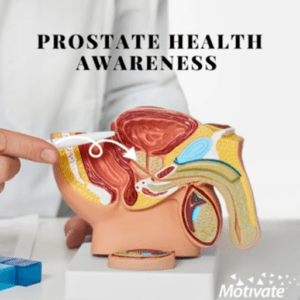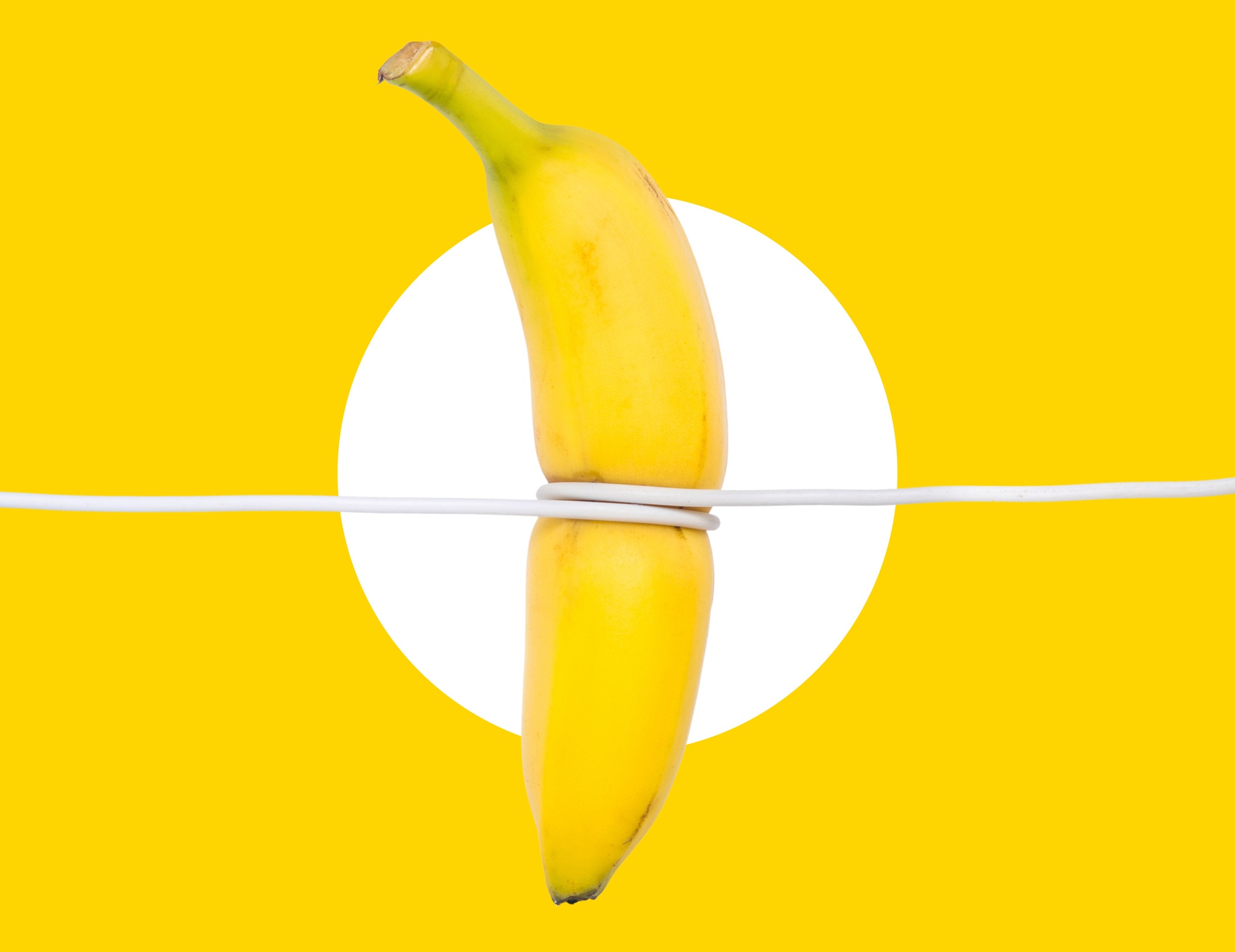Happy June! Here at Motivate, we make it our mission to increase awareness for total body healing. This month our topic of conversation is….
Prostate health awareness
Your prostate is a small gland surrounding your urethra which produces vital fluids needed for reproduction and urination.
However you identify, if you have a prostate, it is important to get routine checkups from your doctor to assess your prostate health.
Along with aging, changing hormone levels, general de-conditioning, and lifestyle choices, it is important to be aware of common health issues involving the prostate, such as: prostatitis, benignprostatic hyperplasia, and prostate cancer.
Prostatitis:
inflammation and swelling of the prostate gland, which can cause:
- Painful and difficulty urination
- Frequent and urgent urination, especially at night
- Back, abdomen, groin, pelvic, and/or genital pain
- Pain with ejaculation
Fact: Prostatitis is the most common urinary tract issue for males 50 years old and younger. (National Institute of Health)
Benign Prostatic Hyperplasia (BPH):
The prostate increases in size and becomes enlarged, putting excessive pressure on the urethra leading to:
- Frequent and urgent urination, especially at night
- Difficulty initiating urination
- Weak or intermittent urine stream
- Small leakage post urination
- Incomplete bladder emptying
Fact: 50% of men between age 51 & 60 will be affected by BPH (National Institute of Health)
Prostate Cancer:
Malignant cells within the prostate, that when severe may require a prostatectomy. Partial or full removal of the prostate may lead to issues such as:
- Decreased urinary control
- Urinary leakage
- Scarring and tissue adhesions
- Erectile dysfunction
- General fatigue
Fact: Prostate cancer is the #1 cancer among men in the United States (National Cancer institute)
Although these conditions may seem daunting, pelvic floor therapy can help! From modifying behaviors to retraining body mechanics, this month we will be highlighting healthy habits you can adoptto help recover from common prostate conditions to improve your overall pelvic health.
Pelvic Floor Therapy Works
Behavior Awareness
Posture and Chest Gripping Affects Bladder Function
Got pain? Got urge? Got checked?
When was the last time you checked in with your body and noticed that the way you position your posture could be contributing to your pain? At Motivate, we commonly see men develop abnormal posture due to the demands of their job such as prolonged sitting and/or hunching over. Chest gripping is a compensatory strategy where a person pulls in there abdominals for various reasons and holds it like that. Over time this becomes a habit and is done subconsciously.
Long term consequences of this strategy may include:
- Compressing the joints of your rib cage resulting in restricted rotation and extension of the trunk (this is really bad for your golf or tennis swing).
- Restricts rib cage expansion and the ability to breathe through the diaphragm.
- Significantly increases your intra-abdominal pressure putting pressure on your pelvic organs.
- Postural issues will continue to develop such as shoulder rounding and forward head protrusion from being hunching over. This will affect your center of mass, most often shifting it too far forward causing more weight through the balls of the feet instead of over the center of your arches.
Overall, this posture, when left unchecked, can cause unhealthy spinal positioning, imbalanced core muscle use, ongoing pain, and worsen your pelvic floor issues such as urinary retention and urinary leakage. So what should you do about it?
STEP ONE: CHECK-IN
Take a moment to just check-in and look in a mirror to become aware of your posture and how you are positioning your body in space. This is self-care 101.
STEP TWO: RELAX
Try to relax your abdomen to help take pressure off the pelvic floor.
STEP THREE: RETRACT
Pull back or retract your shoulders to establish an upright posture through the upper back and neck.
These three steps can start you on your journey of living a more pain-free, stress-free, and pelvic floor issue-free life!
If you have tried all of these things and feel like nothing helps, pelvic floor therapy works! Free consults are available.

Tissue Health
Along with scar tissue constrictions due to prostatectomies and increased pain experienced from prostatitis, it is common to hold a vast amount of tension and tightness in the male pelvic floor and surrounding muscles. Due to classic male posture, we usually find excessive tightness in the abdominal muscles and hip flexors. At Motivate we believe it is essential to release tight tissue and fascia that is restricting natural total body movement. To maximize your function and reduce pain, we utilize connective tissue manipulation to reduce fascial restrictions and promote adequate tissue health which is combined with focused stretching positions that further advanced your Selfcare recovery.
For example: A male with the job demands of prolonged sitting presents with hip flexor (iliopsoas and quads) tightness and pain that radiates to the groin. To help elevate the pain, we would begin by freeing up tissue in the front of the hip and thigh that may be compressing a nerve and/or shortening muscles. Then we would complement the CTM with a hip extension stretch off the side of the bed. Take a look at our video to learn more!
Does this sound like you? Try the stretch and tell us if it helped in the comments!
Strength through Stability
Prostate awareness month is not only being aware of the pain and dysfunction your experiencing, but also having insight to possible abnormal movement patterns that may be contributing to that pain, or bladder symptoms that are affecting your quality of life.
When men experience groin or pelvic pain, or urinary urgency/hesitancy, the cause may be due to ineffective muscle compensation developed over time, specifically the lower extremities, hips and back compensating for the weaker pelvic floor and core abdominals. To retrain those muscle patterns, we at Motivate focus on strength through stability, where we power the core by challenging the stability of the pelvis. Core stability is imperative to learning new and improved muscle patterns (mobility) thus decreasing pain harbored in the body.
An effective exercise to achieve strength through stability for prostate concerns is the low level transverse abdominis strengthening program on the swiss ball. This exercise challenges core strength and pelvic stability by using an unstable base while facilitating ongoing abdominal contraction, combined with upper and lower extremity movement.
Take a look at our video! Would this help you?
Functionality Mobility
Once stability has been established and strength has been achieved, the transition to functional mobility is the final goal at Motivate. For Males, prostate health recovery does not just stop at adequate strength. The ability to incorporate newfound muscle function into common daily activities is key to whole body healing and living a pain-free life.
For example: Take a male patient whose goals are to return to his leisurely hobby and primary form of physical activity: running. Breaking down the physical demands of running and training the body to integrate its new muscle patterns for proper running progression will lead to personal goal attainment. Watch our video to see the step-by-step running evolution for male pelvic health.
